OS X Lion -
Working with Finder

OS X Lion
Working with Finder


/en/macosxlion/getting-started-with-os-x-lion/content/
If you use a Mac, you'll use Finder any time you want to navigate to a file. You'll also be able to control how your files are displayed, making it easier to find what you need.
Watch the video to learn how to use Finder.
To start navigating, you'll first need to open a Finder window. There are two main ways to do this:
The Finder window is divided into three main parts: the contents of the current folder; the sidebar, which you can use to choose a location; and the toolbar, where you can customize the way the contents are displayed.
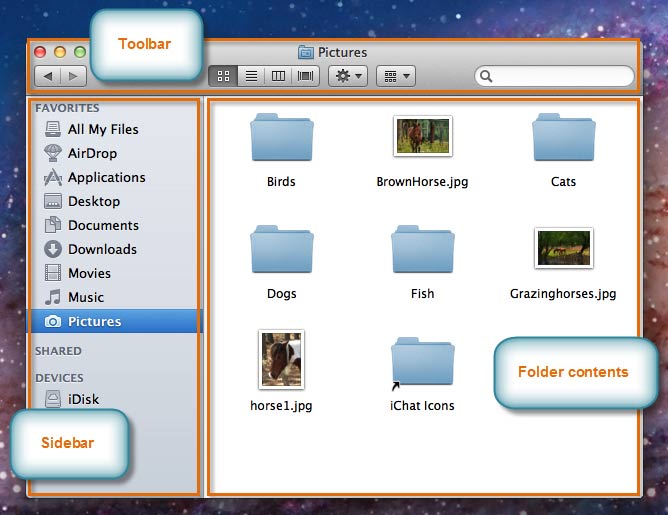 The Finder window
The Finder windowIn the Finder sidebar, you will see shortcuts to folders that have names like Documents, Downloads, Music, and Pictures. These folders are part of your account's home folder. To keep your files organized, you may want to use these folders instead of putting everything on the desktop. If you don't see all of these folders in the sidebar, you can open your home folder to view them.
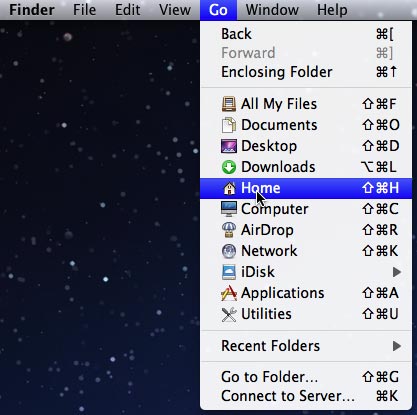 Opening the home folder
Opening the home folder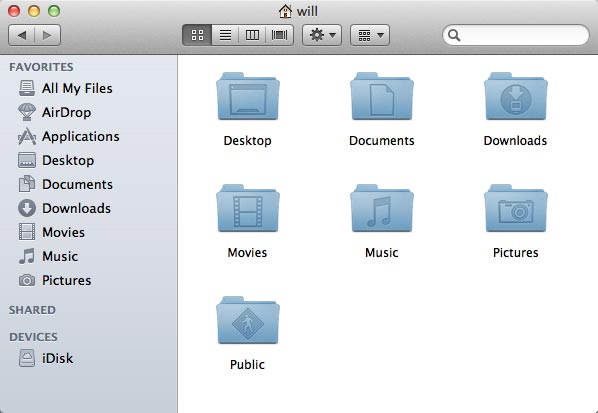 The home folder
The home folderLion allows you to change the way folder contents are displayed by changing the view, arrangement, and sort options. This makes it easier to find the specific file you're looking for.
Finder has four different view options to choose from. You may prefer to use just one all the time, or you can switch between them whenever you want.
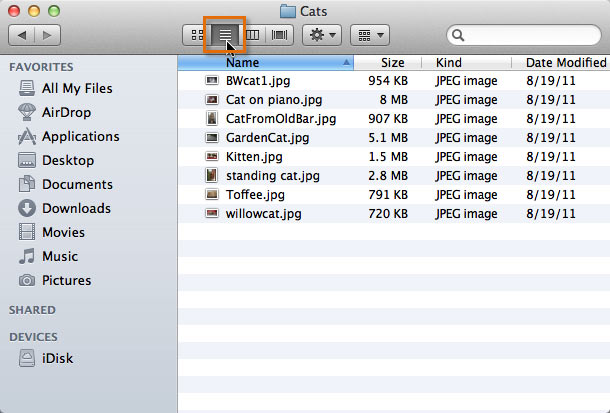 List View
List View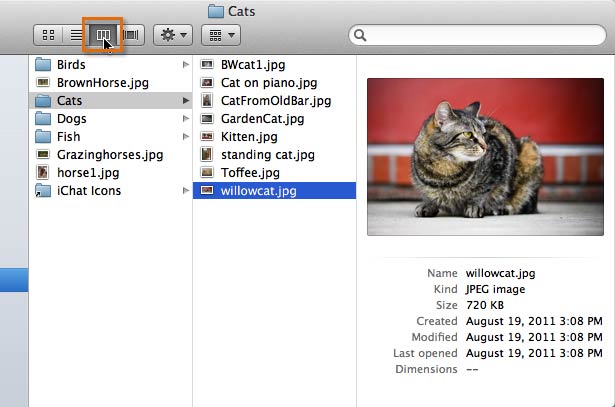 Column View
Column View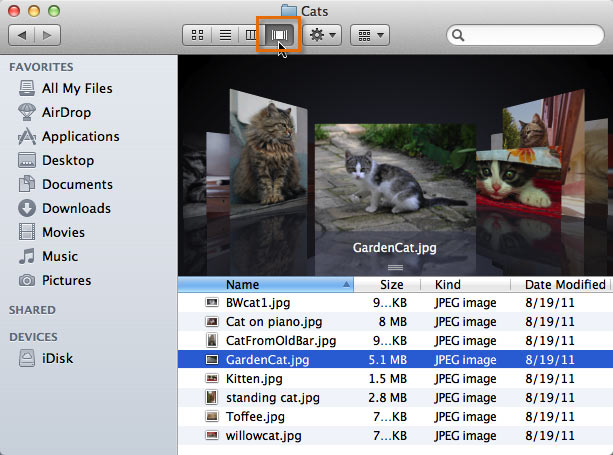 Cover Flow
Cover FlowNo matter which view you're in, you can preview a file by pressing the space bar on your keyboard. This is known as Quick Look. It works with most common file types, but not all.
 Previewing a document with Quick Look
Previewing a document with Quick LookWith Lion, you can group folder contents by file type, application, date, size, or label. This is useful when you have a lot of files in a folder.
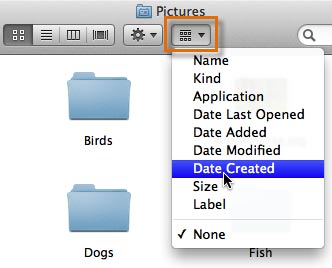 Arranging by Date Created
Arranging by Date Created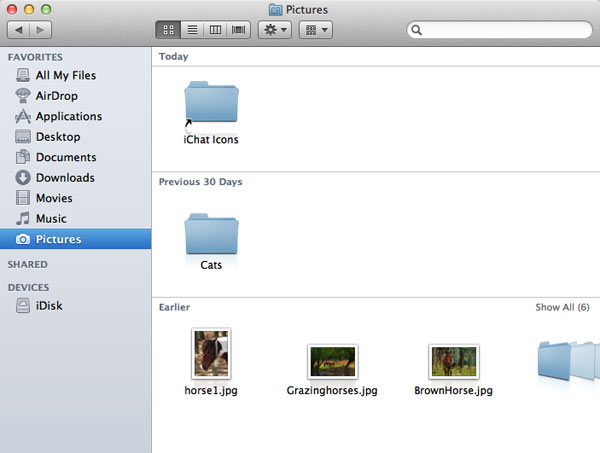 After arranging the folder
After arranging the folderTo remove the grouping, simply change the item arrangement to None.
If you are in list view or cover flow, you can sort the folder contents. This is similar to item arrangement, except it only puts the contents in order and doesn't group them. You can't use sorting and item arrangement at the same time, so you'll need to make sure the item arrangement is set to None.
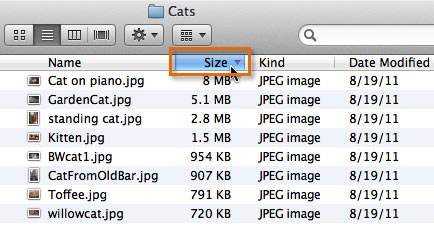 Sorting by file size
Sorting by file sizeIf you don't see the column you want, you can right-click any column header to select the columns you want to show.
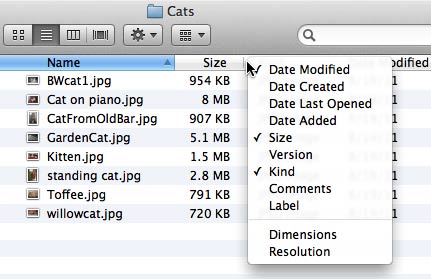 Right-clicking the header to add columns
Right-clicking the header to add columnsNow that you know how to use Finder, you can learn how to create new folders, add shortcuts to the desktop, delete files, color-code folders, and unmount drives that are connected to your computer.
Watch the video to learn how to work with files, folders, and more.
As you organize your files, you'll need to create new folders from time to time. Most of the time, you'll be creating folders within other folders, but you can also put them directly on the desktop. Once you've created a folder, you can change its name or color-code it.
 Right-clicking to create a new folder
Right-clicking to create a new folder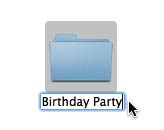 Typing a name for the folder
Typing a name for the folderYou can also create a folder by clicking File in the menu bar and selecting New Folder.
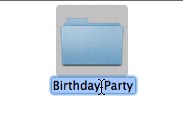 The highlighted folder name
The highlighted folder name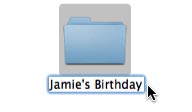 Typing a new name for the folder
Typing a new name for the folder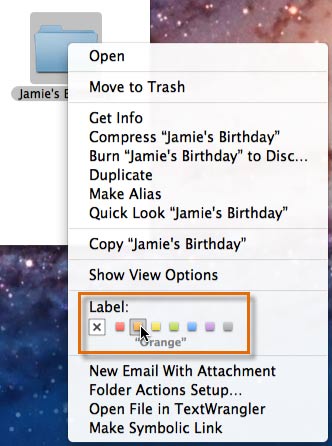 Choosing a folder color
Choosing a folder color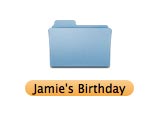 The folder name with the new color
The folder name with the new colorIf you have a folder you use frequently, you can save time by creating a shortcut (also called an alias) on the desktop. Instead of navigating to the folder each time you want to use it, you can simply double-click the shortcut and the folder will open. A shortcut will have a small arrow in the lower-left corner of the icon.
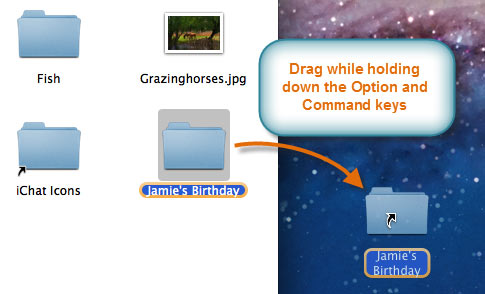 Creating a shortcut on the desktop
Creating a shortcut on the desktop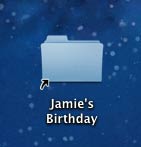 The finished shortcut
The finished shortcutIf you want to remove some of the clutter from your computer, you can delete files and folders you don't need. This will move them to the Trash (which is just like the Recycle Bin in Windows). If you're sure you want to permanently delete them, you can empty the Trash.
 Dragging a file to the Trash
Dragging a file to the Trash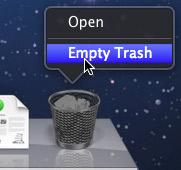 Emptying the Trash
Emptying the TrashOn some Macs, right-clicking may be disabled by default. If you're unable to right-click, you can just click and hold the Trash icon until you see the Empty Trash option.
When you connect a flash drive or external hard drive to your Mac, a drive icon will appear on your desktop. You can double-click this icon to view the contents, just like a folder. Before you disconnect the drive, it's important to eject it (or unmount it) properly to avoid damaging the data.
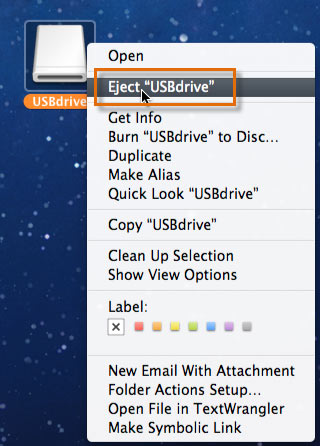 Ejecting a USB flash drive
Ejecting a USB flash drive/en/macosxlion/the-dock-launchpad-and-mission-control/content/